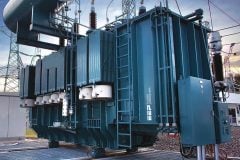
Transformer’s cost
Transformer losses represent power that cannot be delivered to customers and therefore have an associated economic cost to the transformer user/owner.
A reduction in transformer losses generally results in an increase in the transformer’s cost.
Depending on the application, there may be an economic benefit to a transformer with reduced losses and high price (initial cost), and vice versa. This process is typically dealt with through the use of “loss evaluations”, which place a dollar value on the transformer losses to calculate a total owning cost that is a combination of the price and the losses.
Information obtained from such an analysis can be used to compare prices from different manufacturers or to decide on the optimum time to replace existing transformers.
There are guides available, through standards organizations, for the estimation of the cost associated with transformer losses. Loss evaluation values can range from about $500/kW upwards of $12000/kW for the no-load losses and from a few hundred dollars per kilowatt to about $6000 to 8000/kW for load losses and auxiliary losses.
Values will depend upon the application.
Reference: The Electric Power Engineering Handbook by Grigsby, L.L (Get it from Amazon)









Well, as we all know, transformer loss is here to stay. Reducing this loss did appear easy when I was back in grad school but today, when I actually make loss evaluations, I know just how hard it is. Too many tradeoffs!
I want to contribute for your blog. I am already running a science blog.
Thank you for sharing wish you publication will be strong contributatin to electrical development. Thank so much.